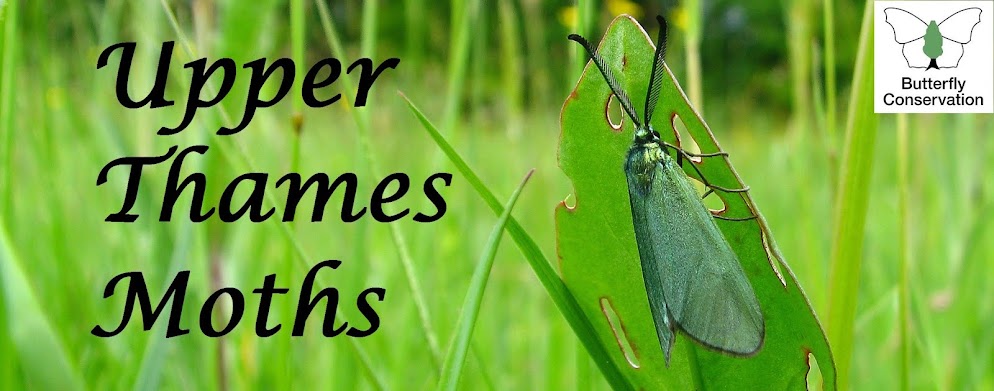Here are the two micros I mentioned in my last bulletin from the Robinson trap at Thrupp, Oxon. I hope I'm right in nailing the first - one of three in the eggboxes - as Agonopterix heracliana (many thanks to Darren Seaman and Steve & Xander Goddard for their pics of Ah in recent posts).
Last night also saw a lovely Oak Beauty, a slightly more worn Brindled Beauty, an Early Grey, a March moth and the usual chorus of Quakers and Drabs. Martin Wainwright



The Agonopterix is very likely to be heracliana, but A. ciliella looks very similar and is best distinguished by some subtle markings on the hindwings, or by dissection. In the UTB area A. ciliella seems to be much scarcer than A. heracliana, but that becomes a self-fulfilling prophecy if we regard everything as heracliana on the grounds that it is the commoner of the two!
ReplyDeleteThe second micro has prominent upturned palps, which rules out the bagworm moths and also rules out Epiblema, although I can see why you went for those. My best guess is that it is the Leek Moth, Acrolepiopsis assectella, but I can't be certain (especially given my recent unreliability on this blog!), and it is the sort of thing that I'd want to keep a specimen of if I needed a confirmed identification.
Dave Hubble has written an interesting blog on the Leek Moth:
http://davehubbleecology.blogspot.co.uk/2011/01/leek-moth-in-britain-spread-and.html
Thanks so much Martin - just shows how challenging the mm brigade are! I did go back later yesterday to see if I could find the little visitor, but without success. Very interesting blog on the Leek Moth too. All warm wishes, M
ReplyDeleteFunnily enough, my first thought on looking at your second micro was Leek Moth, so interesting to see that Martin has suggested this as well. My experience with this is limited to a single individual though.
ReplyDeleteATB, Adam